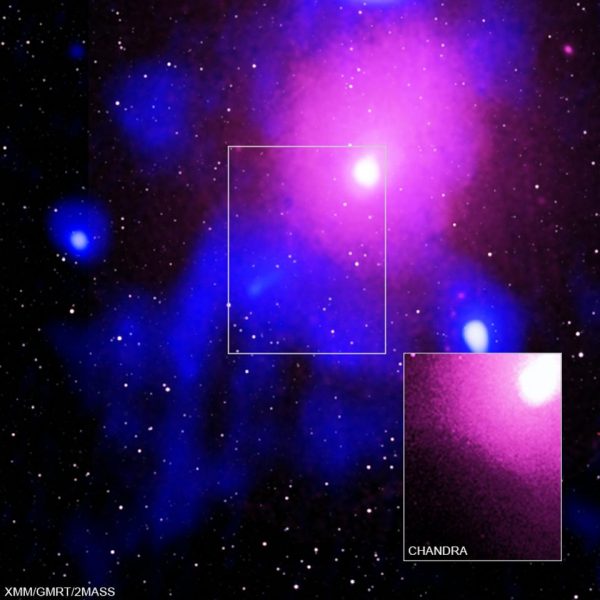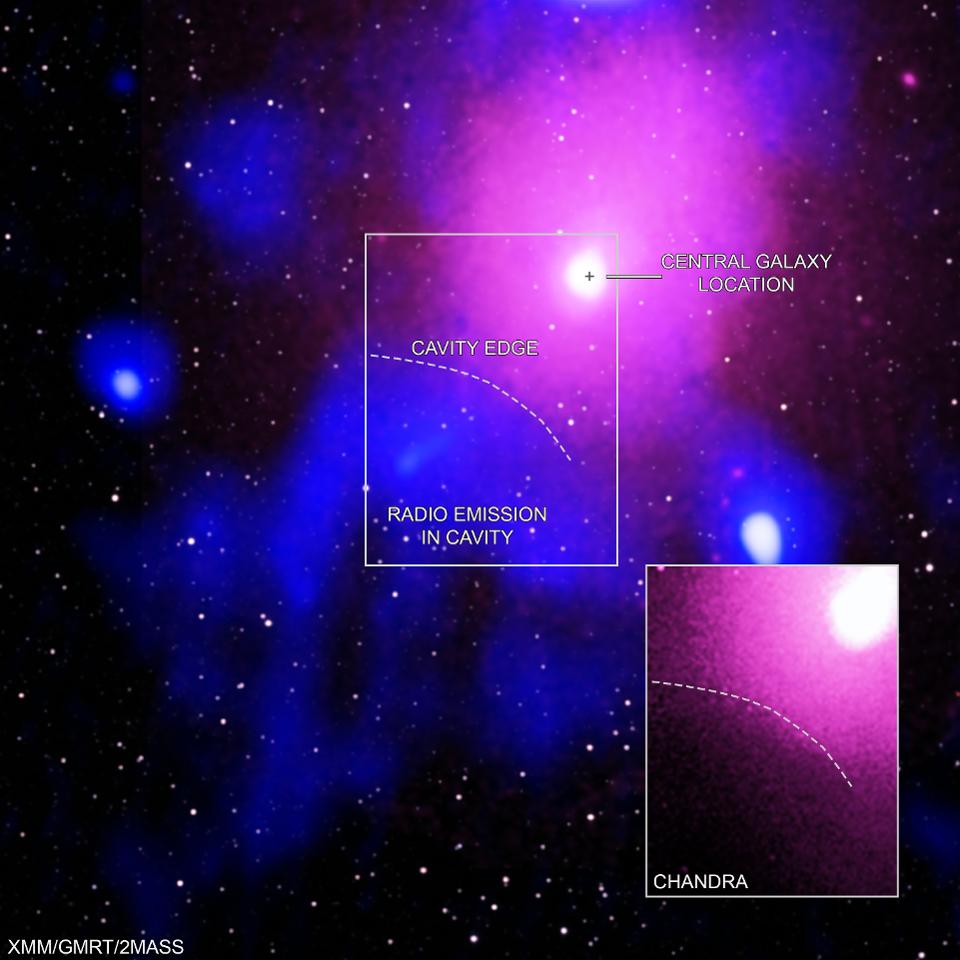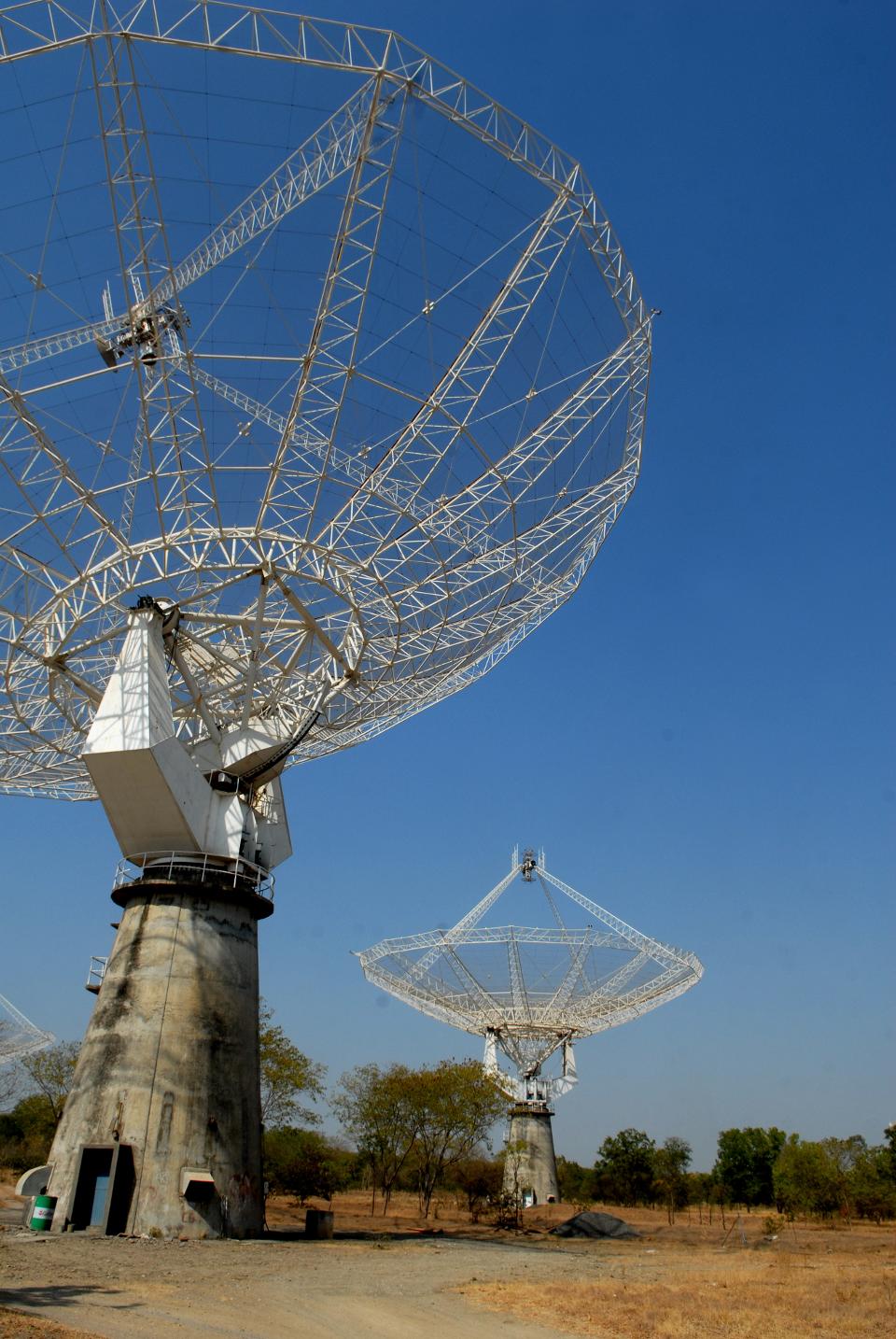‘Biggest Explosion In The Universe Since The Big Bang’ Found By Astronomers – Forbes

Astronomers have discovered the biggest explosion seen in the Universe in the Ophiuchus galaxy … [+] cluster. The region is 2.8 million light years across while the inset image is about 720,000 light years across.
X-ray: Chandra: NASA/CXC/NRL/S. Giacintucci, et al., XMM: ESA/XMM; Radio: NCRA/TIFR/GMRT; Infrared: 2MASS/UMass/IPAC-Caltech/NASA/NSF
Astronomers using a suite of radio telescopes just found “the biggest explosion seen in the Universe since the Big Bang” coming from a supermassive black hole at the centre of a galaxy hundreds of millions of light-years away.
Evidence was detected of an “extraordinarily energetic” eruption in the Ophiuchus galaxy supercluster, which lies around 390 million light years distant.
“We’ve seen outbursts in the centers of galaxies before, but this one is really, really massive,” said Professor Melanie Johnston-Hollitt, from the Curtin University node of the International Centre for Radio Astronomy Research. “And we don’t know why it’s so big, but it happened very slowly—like an explosion in slow motion that took place over hundreds of millions of years.”

The radio and x-ray images combined. The hot gas that pervades clusters like Ophiuchus gives off … [+] much of its light as X-rays. The main panel contains X-rays from XMM-Newton (pink) along with radio data from GMRT (blue), and infrared data from 2MASS (white). In the inset, Chandra’s X-ray data are pink.
X-ray: Chandra: NASA/CXC/NRL/S. Giacintucci, et al., XMM-Newton: ESA/XMM-Newton; Radio: NCRA/TIFR/GMRT; Infrared: 2MASS/UMass/IPAC-Caltech/NASA/NSF
What is the evidence for the explosion?
The astronomers saw a mighty big cavity in the cluster’s plasma—the super-hot gas surrounding its black hole. The cavity in the cluster plasma had been seen previously with X-ray telescopes back in 2016, a discovery that was largely dismissed as unlikely. “People were skeptical because the size of outburst,” said Johnston-Hollit. “But it really is that. The Universe is a weird place.”
Now that data from 2016 has been matched with fresh data from radio telescopes. “The radio data fit inside the X-rays like a hand in a glove,” said co-author Dr Maxim Markevitch from NASA’s Goddard Space Flight Center. “This is the clincher that tells us an eruption of unprecedented size occurred here.”
How big was the explosion?
It’s multi-galactic in size. ”In some ways, this blast is similar to how the eruption of Mt. St. Helens in 1980 ripped off the top of the mountain,” said Simona Giacintucci of the Naval Research Laboratory in Washington, DC and lead author of “Discovery of a Giant Radio Fossil in the Ophiuchus Galaxy Cluster” published today in The Astrophysical Journal. “The difference is that you could fit 15 Milky Way galaxies in a row into the crater this eruption punched into the cluster’s hot gas.”

The GMRT near Pune in India has 30 dishes that operate individually as telescopes, and collectively, … [+] which make the GMRT the world’s largest radio telescope in the 150-1,500 Mhz frequency. (Photo by Hemant Mishra/Mint via Getty Images)
Hindustan Times via Getty Images
What telescopes were used?
Astronomers made this discovery using X-ray data from NASA’s Chandra X-ray Observatory and ESA’s XMM-Newton, and radio data from the Murchison Widefield Array (MWA) in Australia and the Giant Metrewave Radio Telescope (GMRT) in India. “Going back and doing a multi-wavelength study has really made the difference here,” said Johnston-Hollit, who thinks the finding is likely to be the first of many. “It’s a bit like archaeology … we’ve been given the tools to dig deeper with low frequency radio telescopes so we should be able to find more outbursts like this now.”
That’s likely since the Murchison Widefield Array is currently being used with just 2048 antennas pointed towards the sky. “We’re soon going to be gathering observations with 4096 antennas, which should be ten times more sensitive,” said Johnston-Hollit. “I think that’s pretty exciting.”
Wishing you clear skies and wide eyes.






